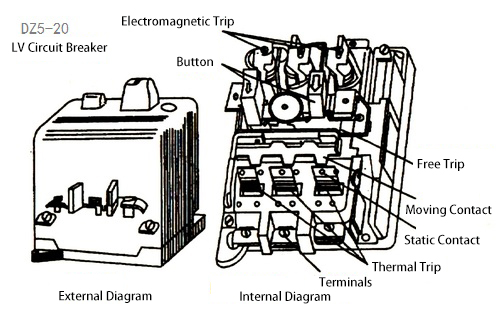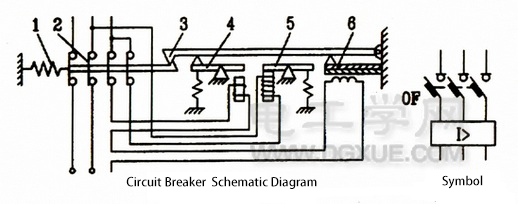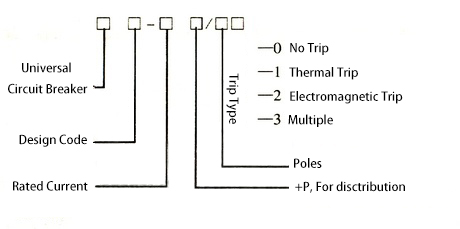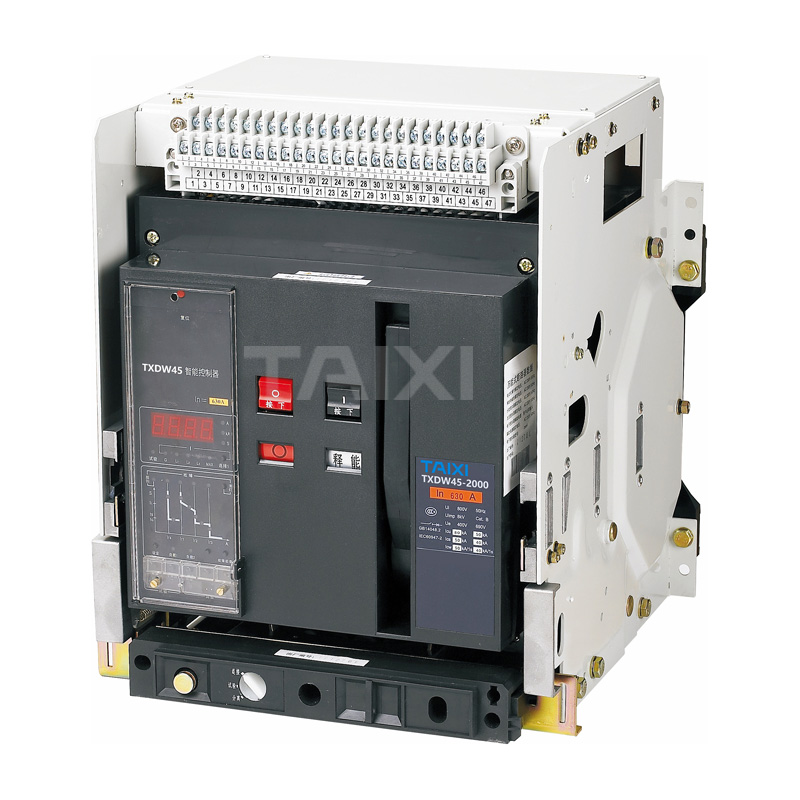Low voltage (LV) circuit breaker is also called automatic air Circuit Breaker or automatic switch. The function of the circuit breaker is that when the circuit has dangerous faults such as short circuit, serious overload and voltage loss, the LV circuit breaker can automatically cut off the fault circuit and effectively protect the electrical equipment connected behind it. Therefore, LV circuit breaker is a very important protective device in low-voltage distribution network. Under normal conditions, low-voltage circuit is also used for less frequent switching-on and disconnection of the circuit and control of the motor. Low-voltage circuit breakers are widely used in electrical engineering due to their advantages of safe operation, adjustable operation value, good interruption ability and various protection functions.
According to different conditions, low voltage circuit breakers can be classified as follows:
1. Low voltage circuit breakers can be divided into two types: universal type (DW series) and plastic shell type (DZ series).
2. According to the movement speed, it can be divided into two types: general type and fast type.
3. According to applications, it can be divided into distribution circuit breakers, motor protection circuit breakers, de-excitation circuit breakers and leakage circuit breakers.
Working Principle of Low Voltage Circuit Breaker
The main components of low-voltage circuit breaker are composed of contact system, protection device, arc extinguishing device and operation structure. The figure below shows the shape and structure of DZ5-20 low voltage circuit breaker.


- Contact system: generally composed of main contact, arc contact and auxiliary contact.
- Arc extinguishing device: adopting grid arc extinguishing method. That is to say, arc-extinguishing grids are usually composed of steel plates of different lengths and placed in the arc-extinguishing chamber of insulating materials to form arc-extinguishing devices.
- Protective device: Short circuit, overload, voltage loss and other protective functions are accomplished by all kinds of trippers. The types of trippers are divided into overcurrent trippers, decompression trippers and thermal trippers according to their protection functions.
Working Principle:
The working principle of low-voltage fuse is shown in the following figure. Figure 2 shows the three sub-contacts of the low-voltage circuit breaker, which are connected in series in the protected three-phase main circuit. When the green button is pressed, the three sub-contacts 2 in the main circuit are hooked by the chain 3 to the hook 4, which overcomes the tension of the spring 1 and keeps in a closed state. The lower right is a circuit breaker symbol.

When the line is working normally, the suction produced by the coil in the electromagnetic release 4 cannot absorb its armature. If the line is short-circuited and a large overcurrent occurs, the suction of the electromagnetic release 4 increases, and the armature is sucked together, and the lever is impacted. The hook 3 is put on top, and the main contact 2 is cut off. If the line voltage drops or de-voltage, the suction of under-voltage tripper 5 decreases or loses suction, armature is pulled open by spring, impact lever, lift the hook 3 and cut off the main contact 2. These are the operating principles of low-voltage circuit breakers.
The working principle of low-voltage fuse is shown in the following figure. Figure 2 shows the three sub-contacts of the low-voltage circuit breaker, which are connected in series in the protected three-phase main circuit. When the green button is pressed, the three sub-contacts 2 in the main circuit are hooked by the chain 3 to the hook 4, which overcomes the tension of the spring 1 and keeps in a closed state. The lower right is a circuit breaker symbol.

When the line is working normally, the suction produced by the coil in the electromagnetic release 4 cannot absorb its armature. If the line is short-circuited and a large overcurrent occurs, the suction of the electromagnetic release 4 increases, and the armature is sucked together, and the lever is impacted. The hook 3 is put on top, and the main contact 2 is cut off. If the line voltage drops or de-voltage, the suction of under-voltage tripper 5 decreases or loses suction, armature is pulled open by spring, impact lever, lift the hook 3 and cut off the main contact 2. These are the operating principles of low-voltage circuit breakers.
Type and Selection of Low Voltage Circuit Breaker
The model meaning of the circuit is shown in the following figure:


Selection of circuit breakers:
- The rated voltage of low voltage circuit breaker should be in accordance with the line voltage.
- The rated current of low voltage circuit breaker should not be less than the calculated current through it (calculated by 1.25 times);
- The type of low voltage circuit breaker should meet the requirements of installation conditions, protection performance and operation mode.
- The interruption ability of low voltage circuit breaker is checked by short circuit current.
Selection of low voltage circuit breaker tripper:
- The rated current of the thermal release shall be the same as the rated current of the motor or other load under its control.
- The setting current of the instantaneous release of the electromagnetic release should be greater than the peak current of the normal operation of the load circuit. When the load is an electric motor, the instantaneous action setting current Iz of the electromagnetic release is Iz (> KIs) (K: safety factor, for DW series frame circuit breaker K = 1.35; for DZ series plastic shell circuit breaker K = 1.7, Is: starting current of the motor);
Attention to Installation and Use of Low Voltage Circuit Breakers
- Low-voltage circuit breakers should be installed vertically according to the regulations. The wires connecting the upper and lower wires should use the wires (or buses) of the specified cross-section. They must not be too small.
- The setting current and other characteristic parameters and selection parameters of the tripper of low voltage circuit breaker are not allowed to be changed at will once they are adjusted. After using for a long time, it is necessary to check whether the spring is rusty and jammed, so as to prevent the correct action from being affected.
- After the overhaul, it is necessary to turn on and score points without electricity, and check the action accurately and reliably before putting into operation.



